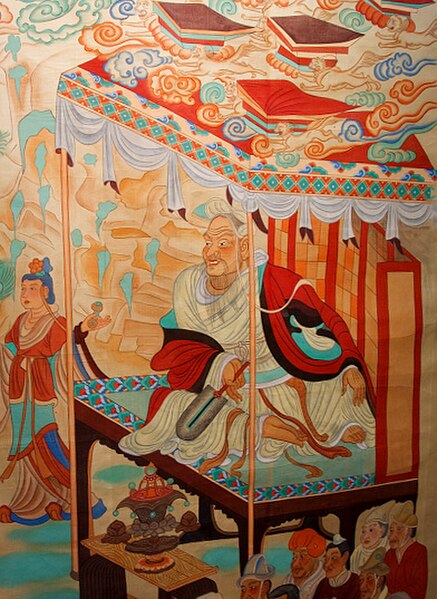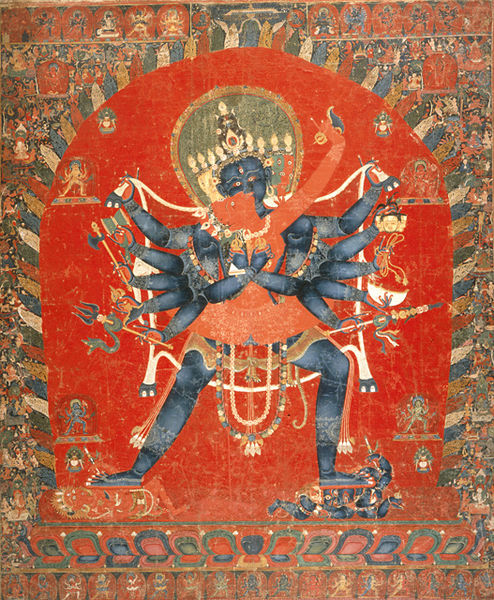The Vimalakīrti Nirdeśa is a Buddhist text which centers on a lay Buddhist meditator who attained a very high degree of enlightenment considered by some second only to the Buddha's. It was extremely influential in East Asia, but most likely of considerably less importance in the Indian and Tibetan sub-traditions of Mahāyāna Buddhism. The word nirdeśa in the title means "instruction, advice", and Vimalakīrti is the name of the main protagonist of the text, and means "Taintless Fame".
Vimalakīrti debating Bodhisattva Mañjuśrī. Chinese painting from the Dunhuang Caves, Tang dynasty
Fragments of Vimalakirti Sutra in Chinese on the reverse side of Old Tibetan Chronicle discovered in Dunhuang Mogao Cave #17
Layman Yuima (Vimalakirti), at the Hosso (Yogacara) temple of Kōfuku-ji
The layman Vimalakīrti Debates Manjusri, Dunhuang Mogao Caves
Nondualism includes a number of philosophical and spiritual traditions that emphasize the absence of fundamental duality or separation in existence. This viewpoint questions the boundaries conventionally imposed between self and other, mind and body, observer and observed, and other dichotomies that shape our perception of reality. As a field of study, nondualism delves into the concept of nonduality and the state of nondual awareness, encompassing a diverse array of interpretations, not limited to a particular cultural or religious context; instead, nondualism emerges as a central teaching across various belief systems, inviting individuals to examine reality beyond the confines of dualistic thinking.
Purusha-Pakriti
The layman Vimalakīrti Debates Manjusri, Dunhuang Mogao Caves
Asaṅga (fl. 4th century C.E.), a Mahayana scholar who wrote numerous works which discuss the Yogacara view and practice
Saṃvara with Vajravārāhī in Yab-Yum. These tantric Buddhist depictions of sexual union symbolize the non-dual union of compassion and emptiness.







